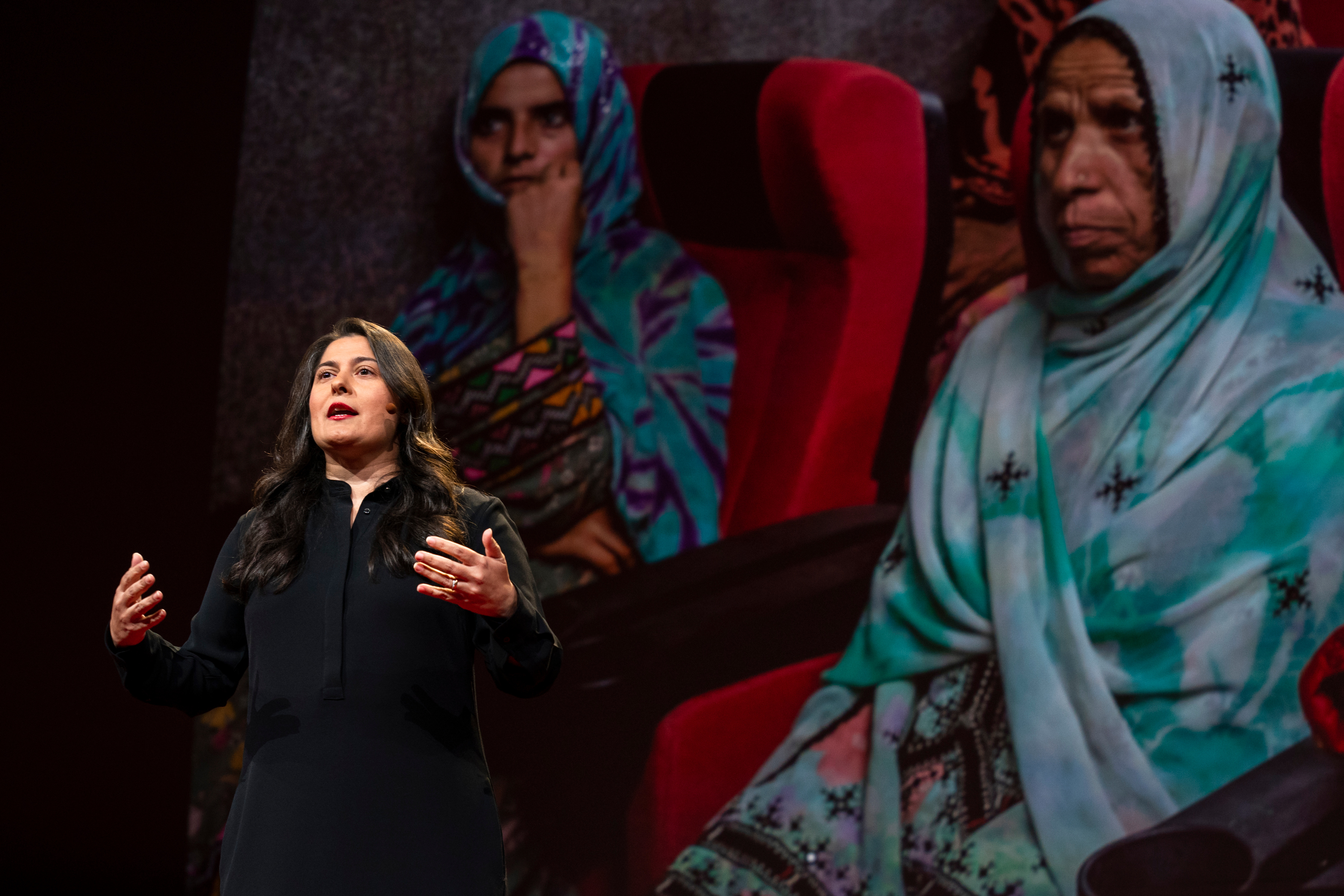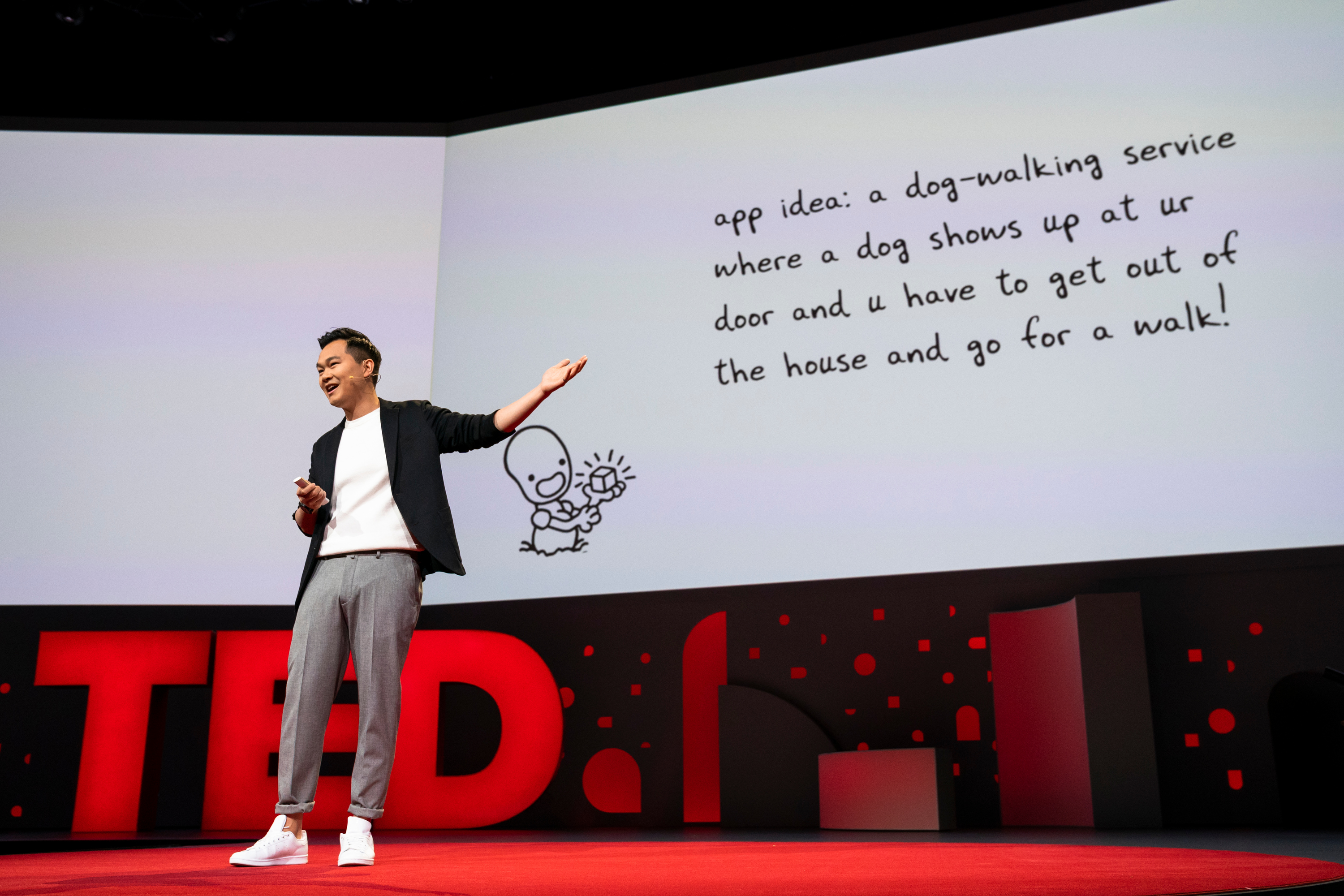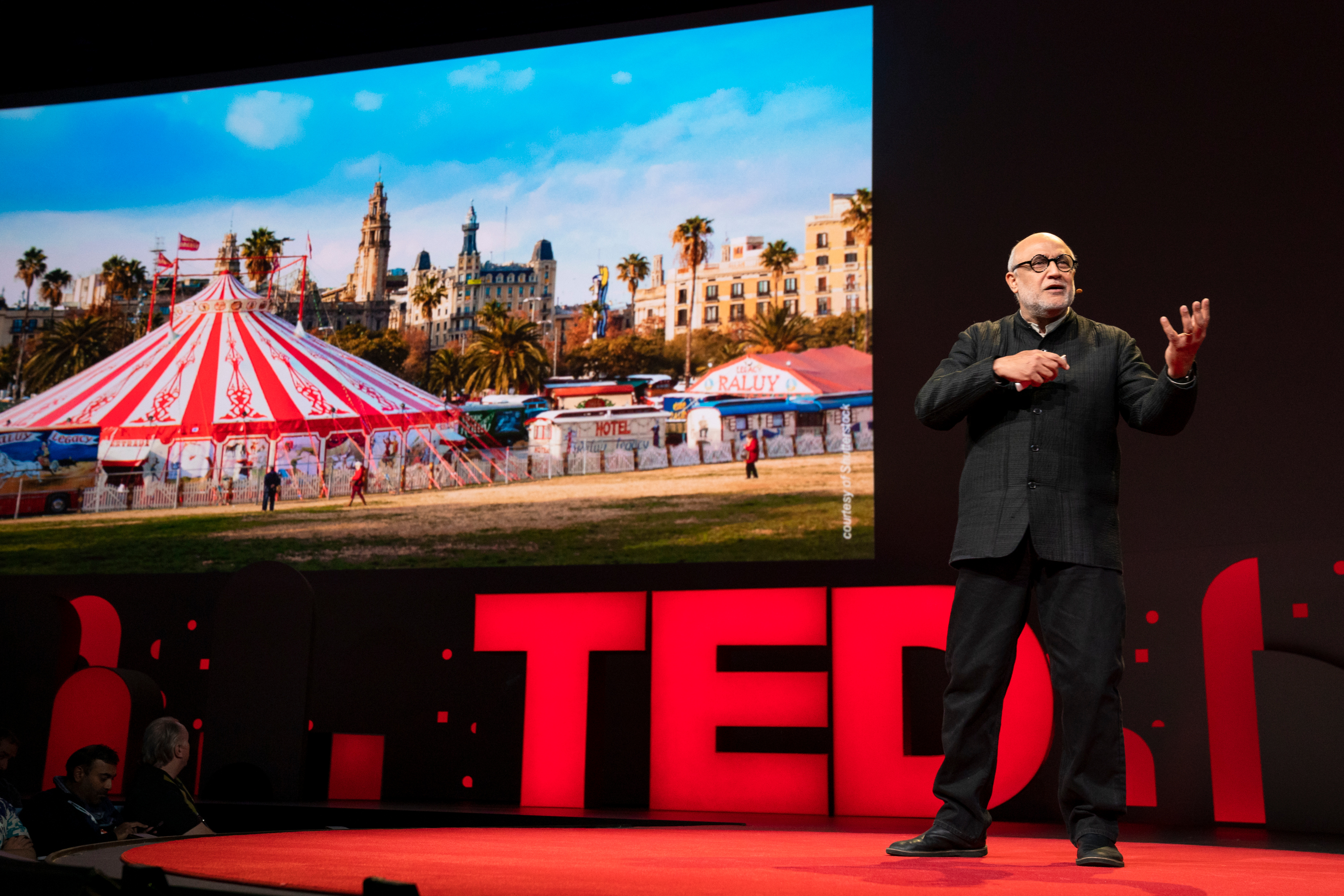
Sharmeen Obaid-Chinoy talks about her documentary film on honor killings — and the lengths she went to to get the film seen in her home of Pakistan, at TED2019: Bigger Than Us, on April 17, 2019, Vancouver, BC, Canada. (Photo: Bret Hartman / TED)
What can we envision, together, to create a world with more joy, love, humanity? At Session 6 of TED2019, we take a deep dive into the world of imagination with some of the authors, designers, architects and filmmakers who are pushing the boundaries of what’s possible.
The event: Talks from TED2019, Session 6: Imagination, hosted by TED’s Helen Walters and Chee Pearlman
When and where: Wednesday, April 17, 2019, 11:15am, at the Vancouver Convention Centre in Vancouver, BC
Speakers: Jacqueline Woodson, Sharmeen Obaid-Chinoy, Jonny Sun, Sarah Sze, Rahul Mehrotra and Bjarke Ingels
The talks in brief:
Jacqueline Woodson, award-winning author and savorer of stories
- Big idea: Reading slowly is a simple, fulfilling way to counter the whiplash of technology and the speed of life today.
- How? Take your sweet time, says Jacqueline Woodson. Stories should not only be honored but savored, too. They help us travel through place and time, through the fictional and real-life perspectives of those who have experienced the past (and, sometimes, the future). In the pages of well-imagined books and generations-old oral histories, storytelling weaves together communities, fosters understanding and allows us to look deeply at the world around us. All we need to do is give these narratives the space and time to flourish and take root in our lives.
- Quote of the talk: “Isn’t that what it’s all about: finding a way at the end of the day to not feel alone in this world, and a way to feel like we’ve changed it before we leave?”
Sharmeen Obaid-Chinoy, documentary filmmaker and storyteller
- Big idea: Film can make positive change by exposing people to alternate views of the world, shifting how we think about ourselves, our cultures, our societies.
- How? Obaid-Chinoy wanted to do something about violence against women in her native Pakistan. So she directed A Girl in the River: The Price of Forgiveness, which documents the country’s tradition of honor killings. It made waves globally, winning an Oscar and even inspiring Pakistan’s prime minister to denounce honor killings, but it wasn’t enough. Obaid-Chinoy took her film on the road, visiting small towns and villages with a mobile cinema. With a big screen plastered to the outside of a truck and a mini theater inside, the mobile cinema offered a safe space for women in segregated communities to watch. Side by side, through film, Obaid-Chinoy and her team encouraged conversation about the harmful traditional practice of honor killings.
- Quote of the talk: “In small towns and villages across Pakistan, there is a revolution. Men are changing the way they interact with women; children are changing the way they see the world. One village at a time — through cinema.”

Jonny Sun shares his moments of vulnerability on social media and, amazingly, the internet talks back. Turns out, we can all be alone together, he says at TED2019: Bigger Than Us, on April 17, 2019, Vancouver, BC, Canada. (Photo: Bret Hartman / TED)
Jonny Sun, illustrator, author, screenwriter, all-round creative person
- Big idea: The Internet can feel like a lonely, chaotic place. But in learning to be more vulnerable with each other online, we find that we are alone together.
- How? Sun’s not here to tell you that social media is a force for unalloyed good. But it does have something important to offer us: each other. In sending jokes and endearing, misspelled, illustrated observations on the human condition “out to the void,” he has found that the void is often willing to talk back, reminding us of our shared human-ness, even if only for a moment. Read more about Jonny Sun’s talk here.
- Quote of the talk: “If someone shares that they feel sad or afraid or alone … it actually makes me feel less alone. Not by getting rid of any of my loneliness, but by showing me that I am not alone in feeling lonely.”
Sarah Sze, an artist who has worked in places like the Seattle Opera House and the NYC subway system and whose work encompasses painting, sculpture, video and installation
- Big idea: Art is a way to explore and express the wonders of the materials of our lives — along with their fragility and mutability.
- How? Sze crafts immersive pieces — some as tall as buildings, splashed across walls or orbiting through galleries. They contain vast constellations of stuff as she plays with scale, time and memory and blurs the lines between what is art and what is everyday life. Just as our human experience is a visual palimpsest, a constantly redrawn sketch of all that we do, see and remember, Sze’s work strives to embody these actions and the tensions that exist among them.
- Quote of the talk: “Female cheetahs are faster than male cheetahs and the reason is because, while they’re smaller, they have bigger hearts. That is a true fact and that may be the only true fact in here. The rest of it is art.”

Rahul Mehrotra takes us on a journey to India’s Kumbh Mela religious festival, where an ephemeral megacity is seamlessly built and disassembled every 12 years. He speaks at TED2019: Bigger Than Us, on April 17, 2019, Vancouver, BC, Canada. (Photo: Bret Hartman / TED)
Rahul Mehrotra, architect, urban designer, professor of design
- Big idea: When it comes to designing cities, we’re obsessed with permanence and predictability. Yet by studying impermanent settlements, we can learn to build cities that are more adaptable, efficient and sustainable.
- How? Every 12 years, a megacity springs up around the confluence of the India’s Yamuna and Ganges rivers. It houses the seven million pilgrims who live there for the 55-day duration of the Kumbh Mela religious festival. The city is fully functional yet impermanent and reversible — built in ten weeks and completely disassembled after the festival. In studying this singular event, Mehrotra realized that our preoccupation with permanence is shortsighted, locking resources into “permanent” solutions to problems that could be irrelevant within a decade. The ideal future of urban design? Elastic settlements with flexible elements that can travel, evolve or even disappear as the situation demands, leaving the lightest possible footprint on this fragile planet.
- Quote of the talk: “We need to make a shift in our imagination about cities. … We need to use our resources more efficiently to extend the expiry date of our planet. We need to change urban design cultures to think of the temporal, the reversible, the disassemblable.”
Bjarke Ingels, architect and designer
- Big idea: By designing architecture that adapts and shifts, we can create stronger communities and better prepare for the changing climate.
- How? From a toxin-free power plant (with a rooftop you can ski on!) to a floating ocean city powered by solar energy, Ingels is expanding architecture’s vision. By tapping into our human adaptability, he shows how we can design buildings and habitats that are beautiful, accessible and resilient to climate change. We need to imagine vibrantly and design flexibly, he says — and, in doing so, we can forge a sustainable future for all.
- Quote of the talk: “This is our collective human superpower: that we have the power to adapt to change and we have the power to give form to our future.”